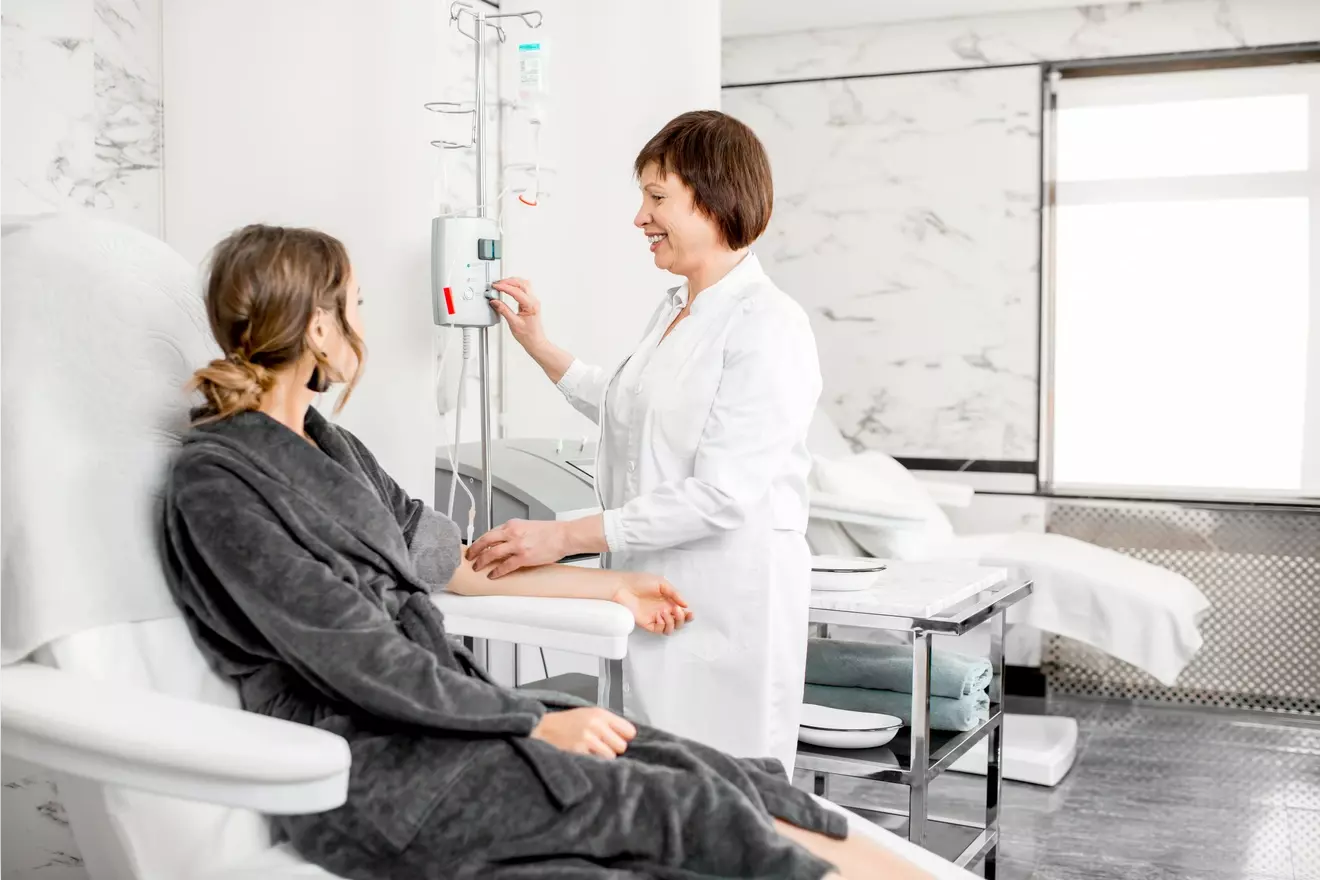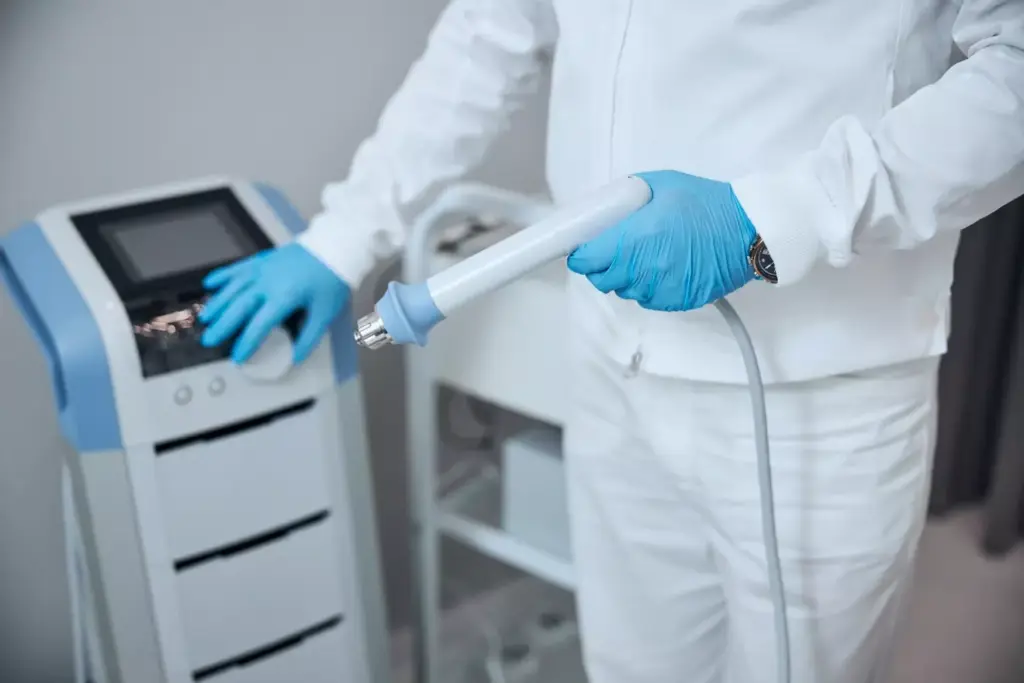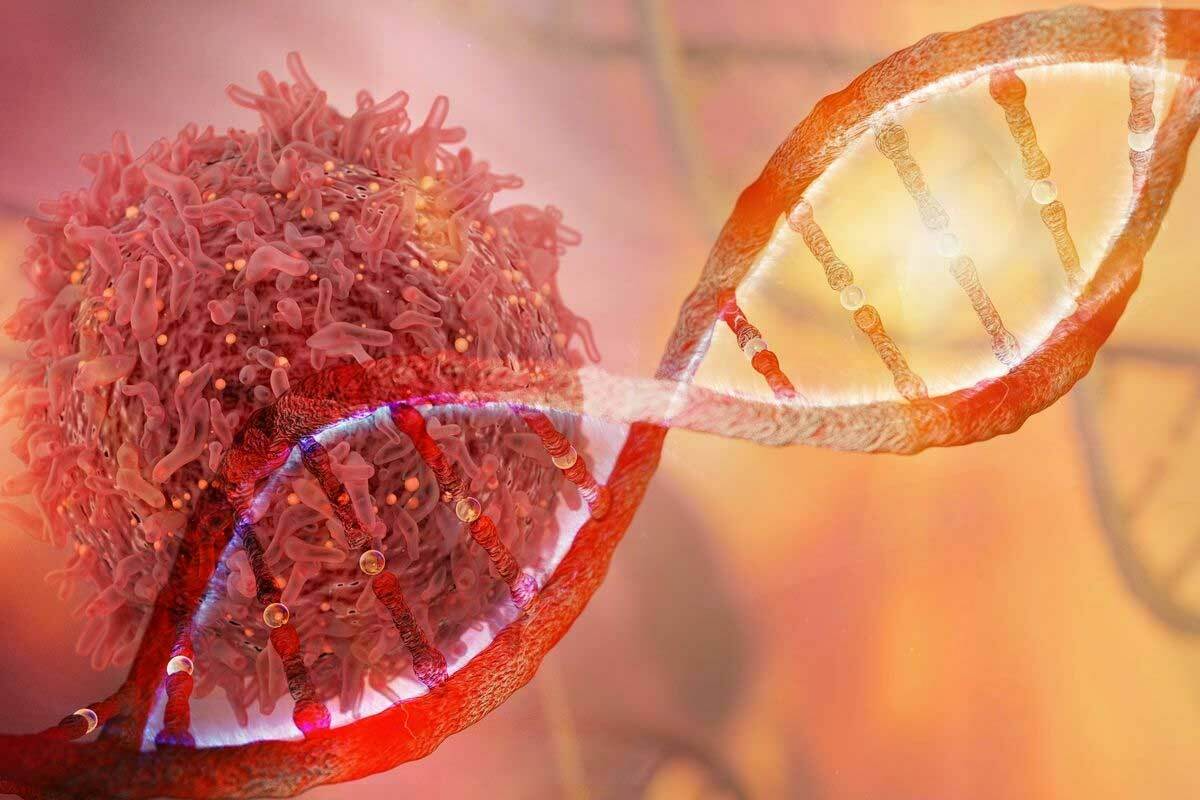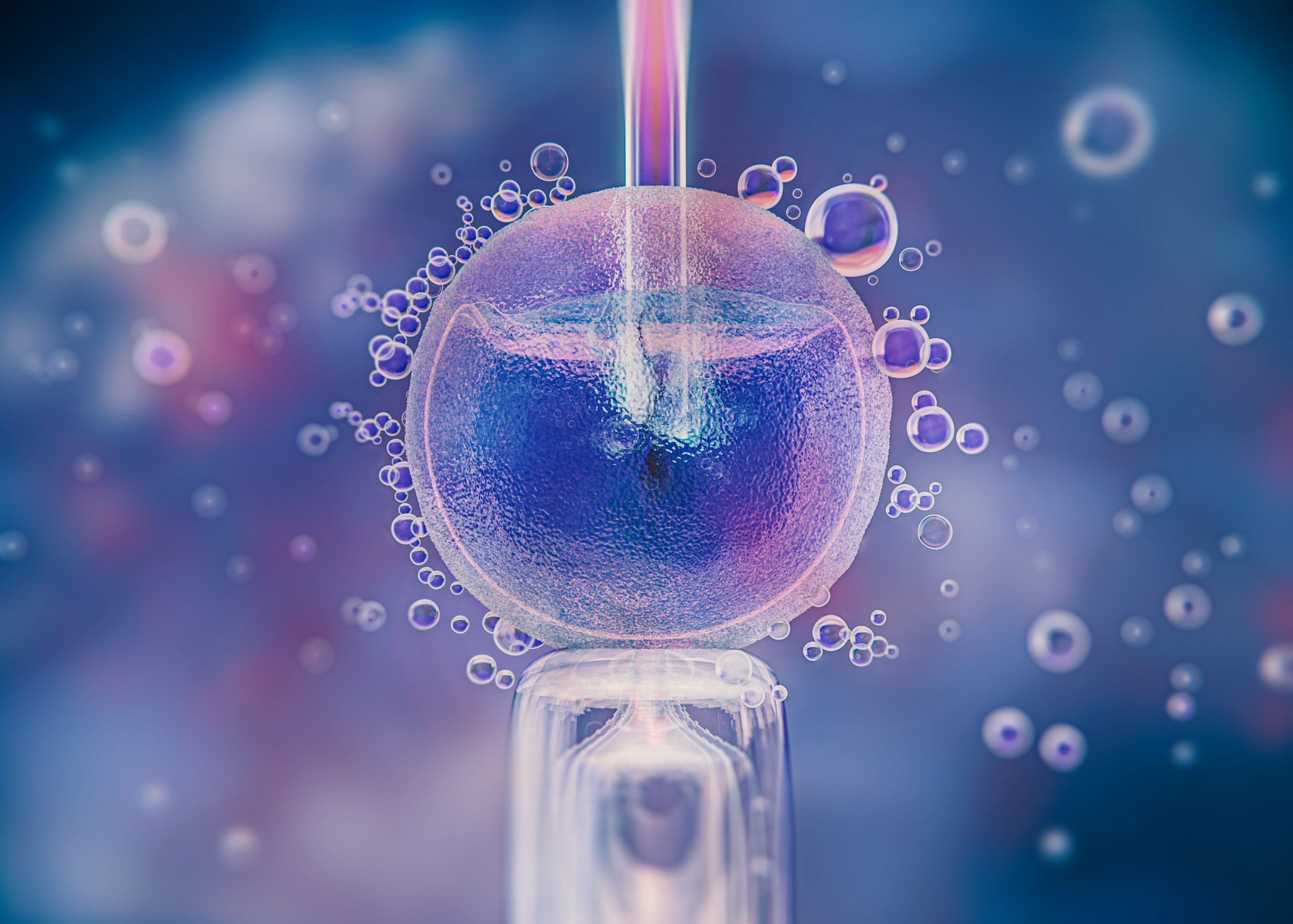Last Updated on November 26, 2025 by Bilal Hasdemir

At Liv Hospital, we aim to give top-notch healthcare with a personal touch. We’re excited to share about CAR T-cell therapy. It’s a new way to fight cancer that’s changing the game.
CAR T-cell therapy makes a patient’s T-cells attack cancer. It’s a personalized way to treat cancer. This therapy is promising because it targets cancer cells without harming healthy tissues.
We’re leaders in patient-centered innovation. We’ll cover the important facts about CAR T-cell therapy. This includes its steps, how well it works, and possible side effects. Knowing these details is key for those thinking about this therapy.
Key Takeaways
- CAR T-cell therapy is a form of immunotherapy that reprograms T-cells to fight cancer.
- This therapy offers a personalized approach to cancer care.
- CAR T-cell therapy has shown promise in targeting specific cancer cells.
- Understanding the steps and possible side effects is important for patients.
- Liv Hospital is dedicated to providing full support for international patients.
What Is CAR T-Cell Therapy: A Breakthrough in Cancer Immunotherapy
CAR T-Cell therapy is a new way to fight cancer by using the body’s immune system. It’s changing how we treat cancer for the better.
The Scientific Mechanism Behind CAR-T Therapy
This therapy starts by taking a patient’s T-cells. Then, it makes them special so they can find and kill cancer cells. The T-cells are given back to the patient to do their job.
It uses chimeric antigen receptors (CARs) to help the T-cells find cancer cells better.
How CAR T-Cell Therapy Revolutionizes Cancer Treatment
CAR T-Cell therapy is showing great promise in treating blood cancers. It gives hope to those who didn’t get better with other treatments. Research shows it can lead to long-lasting remissions.
| Cancer Type | Remission Rate | Response Rate |
|---|---|---|
| Acute Lymphoblastic Leukemia (ALL) | 90% | 95% |
| Diffuse Large B-Cell Lymphoma (DLBCL) | 50% | 70% |
The table shows how well CAR T-Cell therapy works in different cancers.
The Evolution of CART Treatment in Modern Oncology
Cancer treatment has seen a big change with CAR T-cell therapy. This new approach has changed how we fight cancer today.
Historical Development and Milestones
Work on CAR T-cell therapy started decades ago. Big steps were made in the early 2000s. In 2017, the FDA approved the first CAR T-cell therapy, tisagenlecleucel (Kymriah), for some types of leukemia.
After that, the field moved fast. Researchers kept working to make treatments better and safer. They’ve added more uses for CAR T-cell therapy and made new products.
Currently Approved CAR T-Cell Therapies in the United States
In the U.S., several CAR T-cell therapies are approved. These include:
| Therapy Name | Approved Indications | Manufacturer |
|---|---|---|
| Tisagenlecleucel (Kymriah) | Relapsed or refractory B-cell precursor acute lymphoblastic leukemia, diffuse large B-cell lymphoma | Novartis |
| Axicabtagene ciloleucel (Yescarta) | Relapsed or refractory large B-cell lymphoma | Kite Pharma/Gilead |
| Brexucabtagene autoleucel (Tecartus) | Mantle cell lymphoma | Kite Pharma/Gilead |
| Lisocabtagene maraleucel (Breyanzi) | Relapsed or refractory large B-cell lymphoma | Bristol-Myers Squibb |
These approved therapies have changed the game for some blood cancers. They give hope to patients who’ve tried everything else.
Key Fact #1: Engineering T-Cells to Fight Cancer
T-cells are key to our immune system. When we engineer them with chimeric antigen receptors (CARs), they become strong fighters against cancer. We’ll look into how this works and the tech behind it.
Understanding White Blood Cell Therapy Fundamentals
White blood cell therapy uses our immune system to battle diseases like cancer. CAR T-cell therapy is a special kind of treatment that targets cancer cells. It takes T-cells from the patient, makes them recognize and attack cancer, and then puts them back in the body.
This therapy is based on telling healthy cells from harmful ones. By adding CARs to T-cells, we make them better at finding and killing cancer cells without harming healthy tissue.
Chimeric Antigen Receptors: The Cancer-Targeting Technology
Chimeric antigen receptors (CARs) are key in CAR T-cell therapy. These synthetic receptors are made to spot specific antigens on cancer cells. CARs let T-cells latch onto these antigens, starting an immune attack on the cancer cells.
The tech behind CARs includes several parts. There’s an antigen recognition part, a transmembrane part, and an intracellular signaling part. These parts work together to help CAR T-cells find and destroy cancer cells.
Key Fact #2: The Complete CAR-T Treatment Process
The journey to CAR T-Cell Therapy involves several key steps. We will outline these steps in detail. This process ensures safe and effective treatment for certain cancers.
Leukapheresis: Harvesting the Patient’s T-Cells
Leukapheresis is the first step. It separates the patient’s T-cells from their blood. A special machine collects the white blood cells and returns the rest to the patient.
The collected T-cells are then sent to a lab for processing.
Laboratory Engineering: Creating Cancer-Fighting CAR T-Cells
In the lab, the T-cells are genetically modified. They are made to target the patient’s cancer cells. This is done by adding a CAR gene using a viral vector.
The modified T-cells are then grown in number. This creates a strong dose for the patient.
Manufacturing and Quality Control Protocols
The CAR T-cells go through strict quality checks. We look for contaminants, verify the cells’ identity, and test their strength. Only after passing these tests are they ready for the patient.
We pay close attention to every step in the CAR-T treatment process. From the start to the end, each step is vital for success.
Key Fact #3: The CAR T-Cell Infusion Procedure
The CAR T-cell infusion process is a key part of treatment. It needs careful preparation and watching. We’ll explain the important parts of this step.
Lymphodepleting Chemotherapy: Preparing the Body
Lymphodepleting chemotherapy is given before CAR T-cell infusion. It makes the treatment work better. This step removes old lymphocytes, making room for new CAR T-cells.
The CAR-T Transplant: Administration Process
The CAR T-cell infusion is simple. The cells are given through an IV. We make sure the cells are infused correctly to keep them alive.
Critical Post-Infusion Monitoring Period
After infusion, patients are watched closely. They look for signs of improvement or side effects. This watchful period is key to handling any issues.
Knowing about the CAR T-cell infusion helps patients prepare for this important step. Our team offers full care and support every step of the way.
Key Fact #4: Side Effects of CAR T Cell Therapy
It’s important for patients to know about the side effects of CAR T-cell therapy. This treatment has shown great promise in fighting blood cancers. But, it comes with some serious side effects.
Cytokine Release Syndrome: The Most Common CAR-T Side Effect
Cytokine release syndrome (CRS) is a major side effect of CAR T-cell therapy. It happens when the CAR T-cells release a lot of cytokines into the blood. This can cause symptoms from mild to severe, like fever, fatigue, and nausea.
In severe cases, CRS can lead to hypotension and organ dysfunction. It’s a serious condition that needs careful monitoring.
Neurological Complications and Management
Neurological problems are also a big concern with CAR T-cell therapy. These can range from mild symptoms like confusion and memory issues to severe ones like seizures and encephalopathy. To manage these, doctors closely watch patients and may use corticosteroids or other treatments.
Other Possible Complications and Long-Term Effects
Patients may also face other side effects, like infections and cytopenias. There’s also a chance of long-term effects, such as hypogammaglobulinemia. It’s key to understand these risks for proper care.
The table below outlines the main side effects and how they’re managed:
| Side Effect | Symptoms | Management |
|---|---|---|
| Cytokine Release Syndrome (CRS) | Fever, fatigue, nausea, hypotension, organ dysfunction | Close monitoring, supportive care, tocilizumab for severe cases |
| Neurological Complications | Confusion, memory issues, seizures, encephalopathy | Corticosteroids, supportive care, seizure management |
| Infections and Cytopenias | Various infections, low blood cell counts | Prophylactic antibiotics, growth factors, monitoring |
Key Fact #5: Success Rates and Effectiveness Data
CAR T-cell therapy is showing great promise in treating blood cancers. Success rates vary among different patients. It’s key to look at remission rates and what affects treatment success.
Remission Rates in Different Blood Cancers
Research shows CAR T-cell therapy works well for some blood cancers. For example, in relapsed or refractory acute lymphoblastic leukemia (ALL), up to 90% of patients achieve complete remission. In diffuse large B-cell lymphoma (DLBCL), response rates are between 50% and 80%.
| Blood Cancer Type | Remission Rate | Overall Response Rate |
|---|---|---|
| Acute Lymphoblastic Leukemia (ALL) | 90% | N/A |
| Diffuse Large B-Cell Lymphoma (DLBCL) | N/A | 50-80% |
Factors That Influence Treatment Success
Many things can affect how well CAR T-cell therapy works. These include the cancer type and stage, the patient’s age, and overall health. Cytokine release syndrome, a common side effect, can also impact results. A study found that how severe this side effect is can greatly affect treatment success.
“The future of CAR T-cell therapy lies in its ability to be tailored to individual patients, taking into account their unique genetic profiles and cancer characteristics.”
As we improve CAR T-cell therapy, understanding these factors is key. By looking at success rates and effectiveness data, we can see the full promise of this treatment.
Patient Selection: Who Qualifies for CAR-T Therapy
Choosing the right patients for CAR-T therapy is key. It’s based on their medical history, current health, and cancer type. This careful selection is vital for the treatment’s success.
Medical Eligibility Requirements
To get CAR-T therapy, patients must meet certain criteria. They need to have cancer types that CAR-T can treat, like some leukemias or lymphomas. They also must be at a certain stage of their disease. Plus, they must have good organ function and no infections or other health issues that could make treatment risky.
Some important medical criteria are:
- Diagnosis of a specific type of cancer that is eligible for CAR-T therapy
- Adequate organ function, including heart, lung, liver, and kidney function
- No active infections or other medical conditions that could pose a risk
The Comprehensive Pre-Treatment Evaluation
The pre-treatment evaluation is a detailed check-up. It looks at the patient’s medical history, physical condition, lab tests, and imaging studies. This helps us understand the patient’s health and any possible risks with CAR-T therapy.
Key parts of the pre-treatment evaluation are:
- Detailed medical history and physical examination
- Laboratory tests, including blood counts and chemistry profiles
- Imaging studies, such as CT scans or PET scans
Recovery and Life After CAR-T Infusion
The journey to recovery after CAR T-cell therapy is complex. It involves several key steps. Understanding both the immediate and long-term aspects of recovery is essential.
The Initial Recovery Period: What to Expect
Right after CAR T-cell infusion, patients are watched closely for signs of response or side effects. During this time, we manage symptoms and ensure the patient’s safety and comfort. Common experiences include:
- Fatigue: Patients often feel tired or weak.
- Cytokine Release Syndrome (CRS): A serious side effect needing immediate medical attention.
- Neurological Effects: Some patients may experience confusion, memory issues, or speech difficulties.
We offer detailed care to lessen these effects, including medication and supportive therapies.
Long-Term Follow-Up and Monitoring Protocols
After the initial recovery, long-term follow-up is key. It helps assess the treatment’s long-term effects and manage late side effects. Regular check-ups and monitoring are vital for the patient’s ongoing health. Key aspects include:
- Regular Blood Tests: To check blood cell counts and overall health.
- Imaging Studies: Periodic scans to check cancer status.
- Symptom Management: Ongoing evaluation and management of symptoms.
Following these protocols helps improve the patient’s quality of life and treatment outcomes.
Future Horizons: Expanding Applications of CAR-T Therapy
Looking ahead, CAR T-cell therapy is set to change how we treat many cancers. Scientists are working hard to make it work for solid tumors and to improve it with new technologies.
Research Progress in Solid Tumor Treatment
Solid tumors are tough for CAR T-cell therapy because of their complex nature. Researchers are finding ways to tackle these issues. They’re looking at:
- How to keep CAR T-cells in solid tumors longer
- Ways to make CAR T-cells better at finding and attacking cancer cells
- Using CAR T-cell therapy with other treatments to make it more effective
First trials show hope. They suggest CAR T-cell therapy could help people with solid tumors too.
Next-Generation CAR T-Cell Technologies
New CAR T-cell technologies aim to make therapy safer and more effective. These include adding genes to help T-cells last longer and work better. Also, scientists are making CARs more precise to reduce side effects.
These new steps are key to making CAR T-cell therapy better. They help solve problems with current uses.
Conclusion: The Transformative Impact of CAR T-Cell Therapy
We’ve looked into CAR T-cell therapy, a game-changing cancer treatment. It uses the immune system’s power to fight cancer. This therapy has shown great success in treating some blood cancers.
This therapy brings new hope to patients who’ve tried everything else. The process involves several steps, from collecting T-cells to giving them back to the body. It’s important to watch for side effects closely.
As research keeps going, CAR T-cell therapy might help more people. It could even treat solid tumors. This could change how we fight cancer for the better.
Understanding CAR T-cell therapy helps us see its big role in cancer treatment’s future. It’s clear that CAR T-cell therapy will keep being a key part of our fight against cancer.
FAQ
What is CAR T-cell therapy?
CAR T-cell therapy is a new way to fight cancer. It changes a patient’s T-cells to find and kill cancer cells. These T-cells are made to target specific proteins on cancer cells, making treatment more precise.
How does CAR T-cell therapy work?
First, we take the patient’s T-cells through a process called leukapheresis. Then, these cells are changed in a lab to have CARs. After that, the CAR T-cells are grown and given back to the patient to attack cancer cells.
What are the side effects of CAR T-cell therapy?
Side effects can include cytokine release syndrome (CRS), neurological problems, and more. CRS is treated with tocilizumab. Neurological issues are managed with supportive care and sometimes corticosteroids.
What is cytokine release syndrome (CRS)?
CRS is a serious condition caused by CAR T-cells releasing a lot of cytokines. We watch patients closely for CRS and treat it quickly with tocilizumab or other drugs.
How effective is CAR T-cell therapy?
CAR T-cell therapy has shown great promise in treating some blood cancers. It has high success rates in patients with hard-to-treat cancers. The success depends on the cancer type, patient’s health, and the CAR T-cell product used.
Who is eligible for CAR T-cell therapy?
Who can get CAR T-cell therapy varies. We look at the cancer type, stage, previous treatments, and overall health. Each case is evaluated to see if CAR T-cell therapy is right.
What is the recovery process like after CAR T-cell infusion?
After infusion, patients are watched for side effects. The first few weeks can be tough, but most start to get better. Long-term checks are important to see how the treatment is working.
Can CAR T-cell therapy be used for solid tumors?
CAR T-cell therapy is mainly for blood cancers, but research is exploring solid tumors. We’re making progress, and new technologies are being developed to tackle solid tumors.
What is the future of CAR T-cell therapy?
The future looks bright. Research is ongoing to make it work better for more cancers and with fewer side effects. We’re looking at new targets and ways to improve treatment.
How is CAR T-cell therapy manufactured?
Making CAR T-cell therapy involves collecting T-cells, changing them to have CARs, growing them, and preparing them for infusion. We follow strict quality control to ensure safety and effectiveness.
What is lymphodepleting chemotherapy?
Lymphodepleting chemotherapy is given before CAR T-cell infusion. It helps by removing existing lymphocytes, making room for the CAR T-cells to work better.
References
- American Cancer Society. CAR T‑cell Therapy and Its Side Effects. Retrieved from https://www.cancer.org/cancer/managing-cancer/treatment-types/immunotherapy/car-t-cell.html (American Cancer Society)
- ASGCT (American Society of Gene & Cell Therapy). Blood Cancers and CAR T‑Cell Therapy / CAR‑T Basics. Retrieved from https://patienteducation.asgct.org/disease-treatments/car-t-basics (patienteducation.asgct.org)








